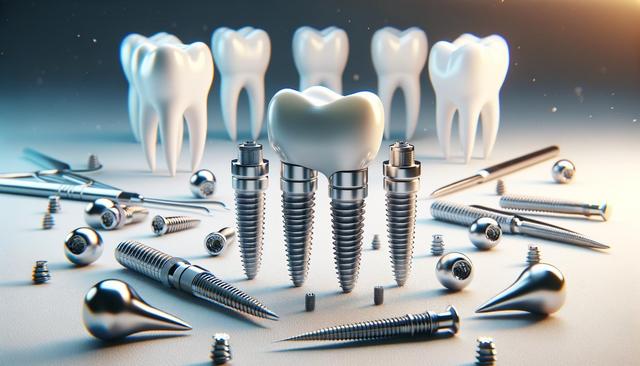What Are Screwless Dental Implants?
Screwless dental implants represent a significant innovation in the field of implant dentistry. Unlike conventional implants that rely on screws to secure the prosthetic crown to the abutment, screwless systems employ friction-fit or cement-retained mechanisms. This design change can simplify the restorative process and eliminate some of the complications associated with screw-retained implants. By avoiding screws, dental professionals can achieve more natural-looking restorations and minimize the risk of screw loosening or fracture, which can be common issues in long-term implant maintenance.
The core concept behind screwless implants is to enhance the structural integrity and aesthetic outcomes of dental restorations. Clinicians often find that eliminating visible screw access holes improves the final appearance of the prosthesis. Additionally, these systems may reduce chairside time during installation and adjustment. As implant technologies continue to evolve, screwless solutions are gaining interest among both dental professionals and patients seeking reliable and less invasive treatment options.
Benefits of Screwless Implant Systems
Screwless dental implants offer numerous advantages that cater to both clinical and patient-centered goals. These benefits are making them a more common choice in modern prosthodontic treatment plans. Some of the primary advantages include:
- Improved aesthetics due to the absence of a visible screw access channel.
- Reduced risk of mechanical failure linked to screw loosening or breakage.
- Simplified design that may result in quicker and more comfortable procedures.
- Potential for enhanced marginal fit and stability of the prosthetic crown.
From a patient’s perspective, these benefits often translate into a more pleasant experience. The elimination of screws can also contribute to a lower risk of complications such as peri-implantitis that may occur due to micro-gaps around the screw channel. Moreover, the cement-retained nature of many screwless systems can offer a more passive fit, reducing stress on the surrounding bone and soft tissues over time.
Clinical Considerations and Indications
While screwless implants present many advantages, they are not suitable for every clinical scenario. Dentists must carefully evaluate patient-specific factors such as bone quality, location of the missing tooth, and occlusal forces. For example, screwless systems may be more appropriate in anterior regions where aesthetics are a primary concern, while screw-retained options might still be preferred in posterior zones with higher masticatory loads.
Indications for screwless implants include:
- Single-tooth replacements in the aesthetic zone.
- Situations where implant angulation allows for ideal crown positioning without screw access compromise.
- Patients with good oral hygiene and low risk of peri-implant complications.
It’s also important to note that cement-retained restorations must be meticulously handled to avoid excess cement, which can lead to soft tissue inflammation. Proper venting and cementation techniques are essential to ensure long-term success and minimize biological complications.
Materials and Technologies Supporting Screwless Design
The success of screwless dental implants is largely supported by advancements in materials and digital technologies. High-strength ceramics, such as zirconia, are commonly used in these systems due to their biocompatibility and favorable aesthetic properties. These materials allow for durable and visually pleasing restorations that blend seamlessly with natural dentition.
In addition, digital workflows including CAD/CAM technology enable precise customization of abutments and crowns. This level of accuracy is crucial for ensuring proper fit and function in screwless designs. Other innovations like 3D printing and intraoral scanning also play a role in enhancing the predictability and efficiency of implant planning and placement.
Technological integration allows for improved communication between dental laboratories and clinics, streamlining the fabrication process. This not only reduces turnaround time but also increases the predictability of the final outcome. As these technologies become more accessible, the adoption of screwless systems is expected to rise.
Comparing Screwless and Screw-Retained Implants
When deciding between screwless and screw-retained dental implants, it’s important to weigh the pros and cons of each approach. Screw-retained implants offer the advantage of retrievability, allowing for easier maintenance or repair if needed. However, they may compromise aesthetics due to visible access holes, especially in front teeth.
Conversely, screwless implants often deliver superior aesthetics and eliminate many mechanical issues related to screws. Yet, they can be more challenging to retrieve and may carry a higher risk of cement-related complications if not handled properly. Ultimately, the choice between the two systems depends on clinical judgment, patient preferences, and long-term treatment goals.
- Screw-retained: Easier retrieval, possible aesthetic limitations.
- Screwless: Better aesthetics, requires precise cementation technique.
The dental community continues to explore hybrid solutions that blend the strengths of both approaches. Innovations such as angulated screw channels and improved cement management techniques aim to offer the benefits of both systems in a single design.
Conclusion: Is a Screwless Implant Right for You?
Screwless dental implants are gaining recognition for their clinical efficiency and aesthetic advantages. They present a viable option for individuals seeking a discreet and durable tooth replacement solution, especially in highly visible areas of the mouth. However, as with any dental procedure, the decision should be based on a thorough consultation with a qualified dental professional who can assess your unique condition and treatment goals.
Patients interested in screwless implants should discuss the potential benefits and limitations with their provider. Understanding the materials, technologies, and techniques involved will help ensure informed decisions and better outcomes. As dental implantology continues to advance, screwless systems are likely to play an increasingly important role in delivering patient-friendly solutions that align with both functional and cosmetic needs.


